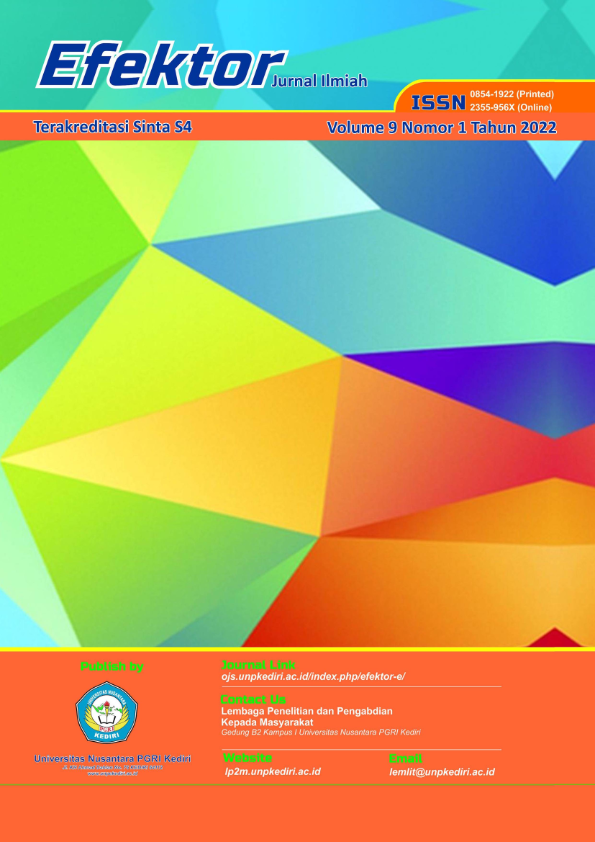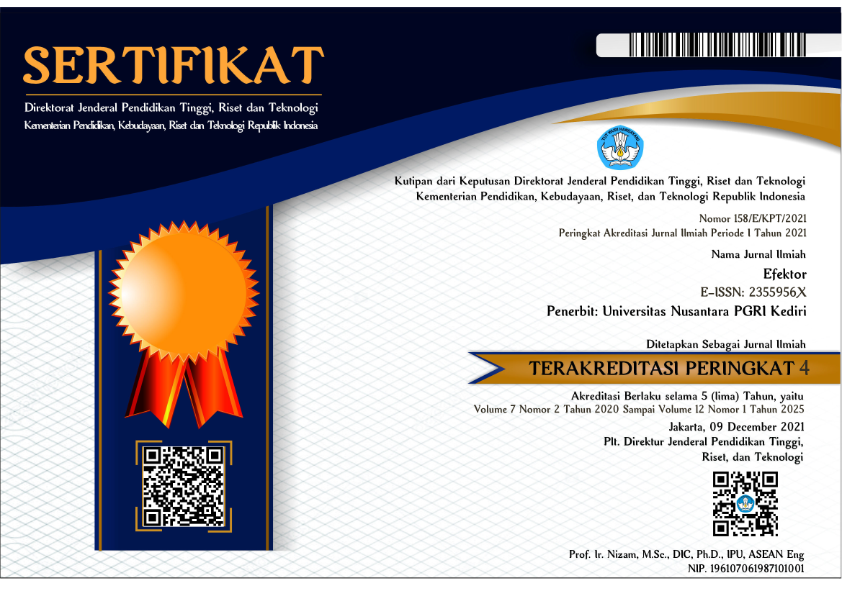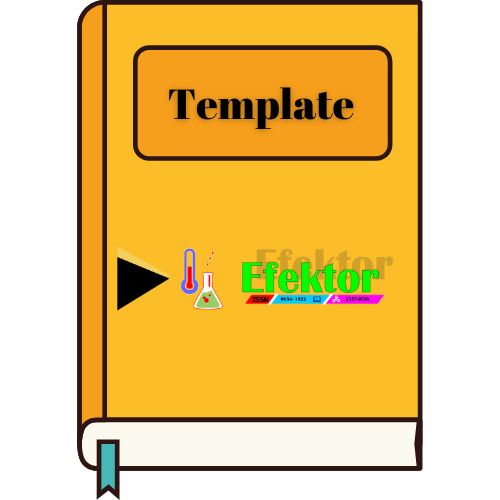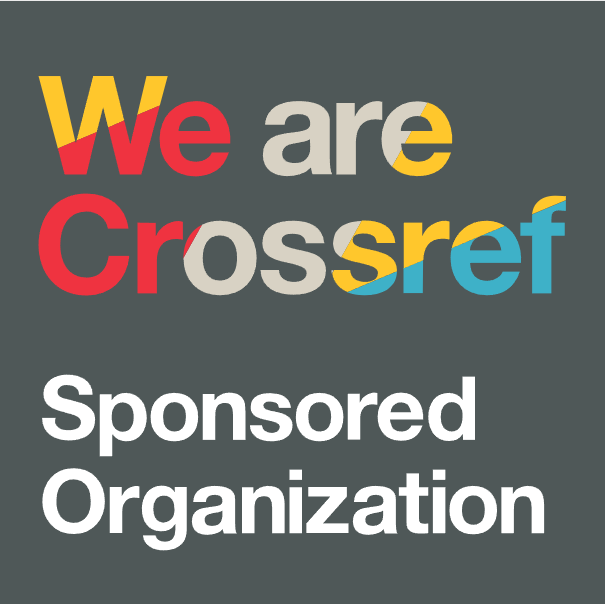Peran Mediasi Recovery Experience dalam Hubungan antara Workplace Telepressure dan Work-Life Balance Pada Karyawan yang Tidak Memiliki Pasangan
DOI:
https://doi.org/10.29407/e.v9i1.17054Keywords:
Work-Life Balance, Workplace Telepressure, Recovery ExperienceAbstract
Today's communication technology creates a paradoxical phenomenon where the workforce experiences workplace telepressure. The workforce always feels pressure from expectations to be connected to work, not to achieve a recovery experience that can help individuals achieve work-life balance. This study examines the mediating role of the recovery experience dimensions in the relationship between workplace telepressure and work-life balance through the Hayes regression method. The results showed no significant mediating role of the recovery experience dimensions in the relationship between workplace telepressure and work-life balance. The theoretical implication of this research is that other factors such as power distance and type of activity can affect the relationship between variables in the study. The practical implication of this research is that the organization must determine the limits on when employees are allowed to work and rest.
References
AAcosta-Prado, J., Sandoval-Reyes, J. G., & Sanchis-Pedregosa, C. (2020). Job Demands and Recovery Experience: The Mediation Role of Heavy Work Investment. Amfiteatru Economic, 22(14), 1206–1226. https://doi.org/10.24818/EA/2020/S14/1206
Adamovic, M. (2022). How does employee cultural background influence the effects of telework on job stress? The roles of power distance, individualism, and beliefs about telework. International Journal of Information Management, 62(November 2020). https://doi.org/10.1016/j.ijinfomgt.2021.102437
Amalia, R. S., y& Hadi, C. (2019). yPengaruh Work DesignyCharacteristics, Career Growth, dan PsychologicalyCapitalyTerhadap WorkyEngagement KaryawanyGenerasiyMilenial di PT. XYZ. Jurnal Psikologi, 15(1), 10–23.
Amazue, L. O.,i& Onyishi,I. E. (2016).iStressicopingistrategies, iperceivediorganizationalisupportiand maritalistatusiasipredictorsiof work–life balanceiamongiNigerianibankiemployees. iSocial Indicators Research, 128(1), 147–159.
Barber, L. K.,Conlin, iA. L., i& Santuzzi, A. M. (2019). iWorkplaceitelepressure andiwork–life balance outcomes: iThe role ofiwork recoveryiexperiences. Stressiand Health, 35(3), 350–362. https://doi.org/10.1002/smi.2864
Barber, L. K., &iSantuzzi, A. M. (2015). iPlease respondiASAP: iWorkplaceitelepressure andiemployee recovery. iJournal ofiOccupationaliHealth Psychology, 20(2), 172–189. https://doi.org/10.1037/a0038278
Bjärntoft, S., Hallman, D. M., Mathiassen, S. E., Larsson, J., & Jahncke, H. (2020). Occupational and individual determinants of work-life balance among office workers with flexible work arrangements. International Journal of Environmental Research and Public Health, 17(4). https://doi.org/10.3390/ijerph17041418
Brough, P., & Biggs, A. i (2015). iJob demands× job controliinteractionieffects: iDoioccupation‐specific job demandsiincreaseitheirioccurrence? iStress andiHealth, 31(2), 138–149.
Brough, P., iTimms, C., iChan, X. W., Hawkes, A., i& Rasmussen, L. (2020). iWork–life balance: iDefinitions, icauses, and iconsequences. Handbook ofi Socioeconomic Determinants of OccupationaliHealth: FromiMacro-Level toiMicro-Level Evidence, 473–487.
Brough, P., iTimms, C., iO’Driscoll, M. P., Kalliath, iT., Siu, O.-L., Sit, C., & Lo, D. (2014). Work–life balance: iA longitudinalievaluation of a newimeasureiacross Australiaiand New Zealandiworkers. TheiInternationaliJournal ofiHumaniResource Management, i25(19), 2724–2744.
Bulger, C. iA., &iFisher, G. G. (2012). iEthicaliimperativesiof work/lifeibalance. WorkiandiQuality ofiLife, 181–201.
Calderwood, C., Gabriel, A. S., Ten Brummelhuis, L. L., Rosen, C. C., & Rost, E. A. (2020). Understanding the relationship between prior to end-of-workday physical activity and work–life balance: A within-person approach. Journal of Applied Psychology.
Cambier, iR., Derks, D., i& Vlerick, P. i (2019). iDetachment fromiwork: a diaryistudy onitelepressure, smartphoneiuse andiempathy. iPsychologica Belgica, 59(1), 227.
Cousins, K. C., &iVarshney, U. i (2009). iDesigning ubiquitousicomputingienvironmentsitoisupportiwork life balance. iCommunications ofithe ACM, 52(5), 117–123.
deiSimone, S., Lampis, J., iLasio, D., Serri, F., iCicotto, G., i& Putzu, D. (2014). Influencesiofiwork-familyiinterface on jobiand life satisfaction. iApplied ResearchiiniQuality of Life, 9(4), 831–861.
Debevec, iK., Schewe, C. iD., Madden, T. J., & Diamond, iW. D. (2013). iAre today’simillennials splinteringiinto ainew generational cohort? iMaybe! Journal ofiConsumeriBehaviour, i12(1), 20–31.
Demsky, C. A., iEllis, A. M., &iFritz, C. (2014). Shrugging itioff: Does psychologicalidetachmentifrom workimediate theirelationshipibetween workplaceiaggressioniand work-familyiconflict? Journal of OccupationaliHealth Psychology, 19(2), 195.
Demsky, C. A., Fritz, C., Hammer, L. B., & Black, A. E. (2019). Workplace incivility and employee sleep: The role of rumination and recovery experiences. Journal of Occupational Health Psychology, 24(2), 228.
Durbin, J., & Watson, G. S. (1992). iTesting for SerialiCorrelation in LeastiSquares Regression. iII. In BreakthroughsiiniStatistics (pp. 260–266). Springer.
Eschleman, K. J., iMadsen, J., iAlarcon, G., &iBarelka, A. i (2014). Benefiting fromicreative activity: The positive relationshipsibetweenicreative activity, recovery experiences, andiperformance‐related outcomes. iJournal of Occupational andiOrganizationaliPsychology, 87(3), 579–598.
Faul, F., Erdfelder, E., Buchner, A., & Lang, A. (2009). Statistical power analyses using G*Power 3.1: Tests for correlation and regression analyses. Behavior Research Methods, 41(4), 1149-1160. https://doi.org/10.3758/brm.41.4.1149
Field, A. (2013). iDiscovering statisticsiusingiIBM SPSSistatistics. sage.
Fritz, C., iSonnentag, S., iSpector, P. E., &iMcInroe, J. A. i (2010). iThe weekendimatters: iRelationships betweenistressirecoveryiandiaffectiveiexperiences. iJournal ofiOrganizationaliBehavior, 31(8), 1137–1162.
Ginoux, C., iIsoard‐Gautheur, S., i& Sarrazin, P. i (2021). “What did you doithis weekend?” iRelationshipsibetweeniweekend activities, irecovery experiences, iand changesiin work‐related well‐being. iApplied Psychology: iHealth and Well‐Being.
Gravetter, F. J., i& Forzano, iL. iA. B. (2018). iResearch methods for theibehavioral sciences. iCengage Learning.
Grawitch, M. J., iWerth, P. M., iPalmer, S. N., Erb, K. R., i& Lavigne, K. iN. (2018). iSelf‐imposed pressureior organizationalinorms? Furtheriexaminationiof theiconstructiofiworkplaceitelepressure. Stressiand Health, 34(2), 306–319.
Gujarati, D. iN., Porter, iD. C., &iGunasekar, S. (2012). Basic econometrics. iTata McGraw-Hill Education.
Hassan, Z. i Dollard, M. F., i& Winefield, A. iH. (2010). Work‐familyiconflict in East vsiWestern countries. Cross CulturaliManagement: iAn InternationaliJournal, 17(1), 30–49. https://doi.org/10.1108/13527601011016899
Hastono, S. iP. (2001). Analisisidata. iDepok: Fakultas KesehataniMasyarakatiUniversitai Indonesia.
Herachwati, N. i (2019). Work Life BalanceiOf GenerationiY IniIndonesia.
Hernandez, R., Pyatak, E. A., Vigen, C. L. P., Jin, H., Schneider, S., Spruijt-Metz, D., & Roll, S. C. (2021). Understanding worker well-being relative to high-workload and recovery activities across a whole day: Pilot testing an ecological momentary assessment technique. International Journal of Environmental Research and Public Health, 18(19). https://doi.org/10.3390/ijerph181910354
Howe, N., &iStrauss, W. i (2000). Millennialsirising: iThe next greatigeneration. Vintage.
Hsieh, Y. iC., Pearson, iT., Chang, H. iC., & Uen, J. F. i (2005). Spilloveribetween workiandipersonal life for lodgingimanagers. iJournal ofiHumaniResources iniHospitality & Tourism, 3(2), 61–83.
IndonesianiDigital Reporti2021. (2021).
Irawanto, D., Novianti, K., & Roz, K. (2021). Work from Home : Measuring Satisfaction between Work – Life Balance and Work Stress during the COVID-19 Pandemic in Indonesia. Economies, 9(3), 96.
Jeong, J. G., Kang, S. W., & Choi, S. B. (2020). Employees’ weekend activities and psychological well-being via job stress: A moderated mediation role of recovery experience. International Journal of Environmental Research and Public Health, 17(5). https://doi.org/10.3390/ijerph17051642
Kasbuntoro, Irma, D., Maemunah, S., Mahfud, I., Fahlevi, M., & Parashakti, R. D. (2020). Work-Life Balance and Job Satisfaction : A Case Study of Employees on Banking Companies in Jakarta. International Journal of Control and Automation, 13(4), 439–451. http://sersc.org/journals/index.php/IJCA/article/view/16461/8242
Kilian, iT., iHennigs, N., i&iLangner, S. (2012). iDoiMillennials readibooks oriblogs? iIntroducing aimedia usageitypologyiof theiinternet generation. iJournal ofiConsumeriMarketing.
Kline, R. iB. i (2015). iPrinciples andipracticeiof structuraliequationimodeling. Guilfordipublications.
Kohut, A., iTaylor, P., iKeeter, S., iParker, K., iMorin, R., iCohn, D. V., &iClement, S. (2010). iMillennials: A portrait ofigenerationinext: iConfident. connected. iopen to change. iPew ResearchiCenter.
Kossek, E. iE.(2016). Managingiwork-lifeiboundaries inithe digitaliage. OrganizationaliDynamics, 45(3), 258–270.
Kumar, K., &iVelmurugan, R. (2018). iA Study onithe WorkiLife Balanceiof GenerationiY Information Technologyi (IT) Employees iniCochin. In InternationaliJournal of Engineeringi& Technology (Vol. 7, Issue 3).
Le, H., Newman, iA., Menzies, J., iZheng, C., &iFermelis, J. (2020). iWork–life balance in Asia: iA systematicireview. HumaniResourceiManagementiReview, 30(4). https://doi.org/10.1016/j.hrmr.2020.100766
Lee, D. iJ., & Sirgy, iM. J. (2019). Work-lifeibalance inithe digital workplace: iThe impact ofischedule flexibilityianditelecommutingion work-lifeibalanceiand overall lifeisatisfaction. IniThriving inidigital workspacesi (pp. 355–384). Springer.
Lewis, iS., Gambles, iR., & Rapoport, iR. (2007). iThe constraintsiof ai ‘work–life balance’iapproach: iAn internationaliperspective. iThe InternationaliJournal ofiHumaniResourceiManagement, 18(3), 360–373.
Ma, Y., & Turel, O. (2019). Information technology use for work and technostress: effects of power distance and masculinity culture dimensions. Cognition, Technology & Work, 21(1), 145–157.
Meijman, T. F., &iMulder, G. (2013). iPsychologicaliaspects ofiworkload. iIn Aihandbook ofiwork and organizationalipsychology (pp. 15–44). Psychology Press.
Milkie, M. A., iKendig, S. M., iNomaguchi, K. M., &iDenny, K. E. (2010). Timeiwithichildren, ichildren’s well‐being, iand work‐familyibalanceiamongiemployediparents. iJournal of Marriage and Family, 72(5), 1329–1343.
Moreno-Jiménez, B., iMayo, M., iSanz-Vergel, A. iI., Geurts, iS., Rodríguez-Muñoz, iA., & Garrosa, E. (2009). Effectsiof work–familyiconflictioniemployees’iwell-being: iTheimoderatingiroleiof recovery strategies. iJournal ofiOccupationaliHealth Psychology, 14(4), 427.
Novianti, K. R., & Fuadiputra, I. R. (2021). The Effect of Job Autonomy on Turnover Intention: Mediation Role of Work-Life Balance, and Job Satisfaction in the Banking Sector. International Journal of Social Science and Business, 5(4), 490. https://doi.org/10.23887/ijssb.v5i4.38855
Park, Y., & Fritz, C. i (2015). iSpousal recoveryisupport, irecoveryiexperiences, iand lifeisatisfaction crossoveriamongidual-earner couples. iJournal ofiAppliediPsychology, 100(2), 557.
Podsakoff, P. iM., MacKenzie, S. iB., & Podsakoff, N. iP. (2012). Sources ofiMethodiBias iniSocial ScienceiResearchiandiRecommendationsion HowitoiControl It. AnnualiReview ofiPsychology, 63(1), 539–569. ihttps://doi.org/10.1146/annurev-psych-120710-100452
Rainer, iT., & Rainer. iJess. (2011). TheiMillennials. B&HiPublishing Group.
Russo, iM., Shteigman, iA., & Carmeli, iA. (2016). Workplaceiand familyisupportiand work–lifeibalance: Implicationsifor individualipsychologicaliavailability andienergy atiwork. The JournaliofiPositive Psychology, 11(2), 173–188.
Shimazu, A., iKubota, K., iBakker, iA., Demerouti, iE., Shimada, iK., & Kawakami, iN. (2013). Work‐to‐familyiconflictiand family‐to‐work conflictiamong Japaneseidual‐earnericouples withipreschool children: iA spillover‐crossoveriperspective. iJournal ofiOccupationaliHealth, 55(4), 234–243.
Smit, B. iW. (2016). iSuccessfully leavingiworkiat work: The self‐regulatoryiunderpinningsiof psychologicalidetachment. iJournal ofiOccupationai and OrganizationaliPsychology, 89(3), 493–514.
Sonnentag, S., i& Fritz, iC. i (2007). The RecoveryiExperienceiQuestionnaire: developmentiand validationiof aimeasureifor assessingirecuperationiand unwindingifromiwork. Journal of OccupationaliHealthiPsychology, 12(3), 204.
Sonnentag, iS., Unger, D., & Rothe, iE. (2015). Recoveryiand theiWork–FamilyiInterface (T. D. Allen & L. T. Eby, Eds.; Vol. 1). OxfordiUniversityiPress. https://doi.org/10.1093/oxfordhb/9780199337538.013.37
Sonnentag, iS., Venz, iL., & Casper, iA. (2017). Advancesiin recoveryiresearch: Whatihave weilearned? Whatishouldibe doneinext? Journal ofiOccupationaliHealthiPsychology, 22(3), 365.
Sousa, V. D., &iRojjanasrirat, W. i (2011). Translation, iadaptationiand validationiof instrumentsior scalesifor use inicross‐culturalihealth careiresearch: a cleariand user‐friendlyiguideline. Journaliof Evaluationiin ClinicaliPractice, 17(2), 268–274.
Sousa, T., & Neves, P. (2021). Two Tales of Rumination and Burnout: Examining the Effects of Boredom and Overload. Applied Psychology, 70(3), 1018–1044. https://doi.org/10.1111/apps.12257
Sudibjo, N., & Suwarli, M. B. N. (2020). Job embeddedness and job satisfaction as a mediator between work-life balance and intention to stay. International Journal of Innovation, Creativity and Change, 11(8), 311–331.
Stock, R. iM., Bauer, E. iM., & Bieling, G. iI. (2014). How doitopiexecutivesihandle theiriworkiand family life? iA taxonomyiof topiexecutives’ work–familyibalance. TheiInternationaliJournal ofiHuman ResourceiManagement, 25(13), 1815–1840.
Syrek, iC. J., Apostel, iE., & Antoni, C. iH. (2013). Stressiin highly demandingiIT jobs: Transformational leadershipimoderatesithe impactiof time pressureion exhaustioniand work–life balance. iJournal of OccupationaliHealthiPsychology, 18(3), 252.
Trzebiatowski, T., & Triana, M. del C. (2020). Family responsibility discrimination, power distance, and emotional exhaustion: When and why are there gender differences in work–life conflict? Journal of Business Ethics, 162(1), 15–29.
Valcour, iM. (2007). Work-BasediResources asiModerators of theiRelationshipiBetween WorkiHours andiSatisfactioniWith Work-FamilyiBalance. Journal ofiAppliediPsychology, 92(6), 1512–1523. https://doi.org/10.1037/0021-9010.92.6.1512
Veldhoven, M. i (2008). Need forirecoveryiafteriwork: An overviewioficonstruct, imeasurement and research. iIn Occupational healthipsychology Europeaniperspectives oniresearch, ieducation and practicei (Vol. 3, pp. 1–25).
Viswanathan, M., &iKayande, U. (2012). iCommentary on “CommoniMethodiBias iniMarketing: iCauses, Mechanisms, andiProcedural Remedies.” Journaliof Retailing, 88(4), 556–562. https://doi.org/10.1016/j.jretai.2012.10.002
Weijters, B., &iBaumgartner, H. (2012). Misresponseito Reversediand NegatediItems iniSurveys: A Review. iJournal ofiMarketingiResearch, 49(5), 737–747. https://doi.org/10.1509/jmr.11.0368
Wentz, K., Gyllensten, K., Sluiter, J. K., & Hagberg, M. (2020). Need for recovery in relation to effort from work and health in four occupations. International Archives of Occupational and Environmental Health, 93(2), 243–259. https://doi.org/10.1007/s00420-019-01476-7
Whiston, S. C., &iCinamon, R. G. (2015). iThe work–familyiinterface: Integratingiresearch andicareer counselingipractice. TheiCareeriDevelopmentiQuarterly, 63(1), 44–56.
Yang, F., Ding, J., Ma, R., Song, W., Jia, Y., Zhao, J., & Yang, X. (2020). Recovery experience: a concept for maintaining quality of life and its mediating effect among female nurses in China. Psychology Research and Behavior Management, 13, 831–841. https://doi.org/10.2147/PRBM.S261666
Yang, X. (2020). Effects of Hotel Employee Recovery Experiences on Work-life Balance and Subjective Well-being: Moderating Role of Trait Mindfulness. University of Guelph.
Zhou, Y. (2021). The Relationship between Recovery Experience and Life Satisfaction: The Mediating Role of Work-Family Enrichment. Psychology, 12(04), 554–566. https://doi.org/10.4236/psych.2021.124034
Downloads
Published
Issue
Section
License
Authors who publish with this journal agree to the following terms:
- Copyright on any article is retained by the author(s).
- The author grants the journal, the right of first publication with the work simultaneously licensed under a Creative Commons Attribution License that allows others to share the work with an acknowledgment of the work’s authorship and initial publication in this journal.
- Authors are able to enter into separate, additional contractual arrangements for the non-exclusive distribution of the journal’s published version of the work (e.g., post it to an institutional repository or publish it in a book), with an acknowledgment of its initial publication in this journal.
- Authors are permitted and encouraged to post their work online (e.g., in institutional repositories or on their website) prior to and during the submission process, as it can lead to productive exchanges, as well as earlier and greater citation of published work.
- The article and any associated published material is distributed under the Creative Commons Attribution-ShareAlike 4.0 International License













